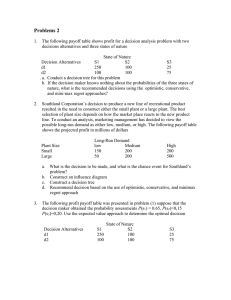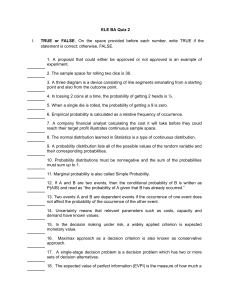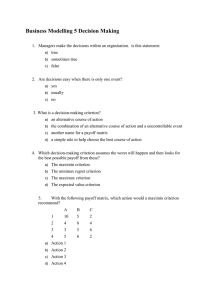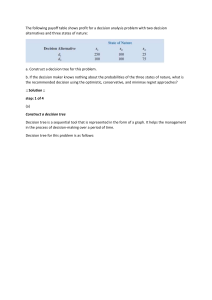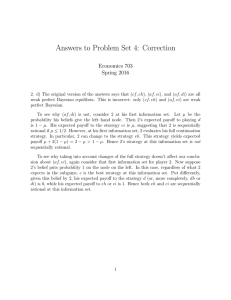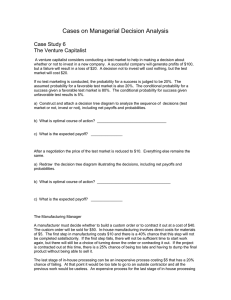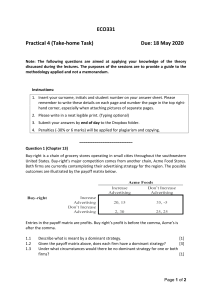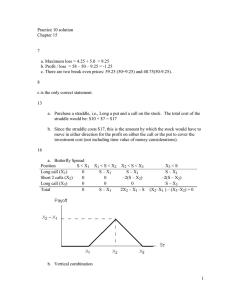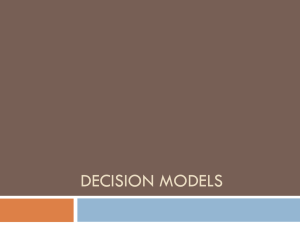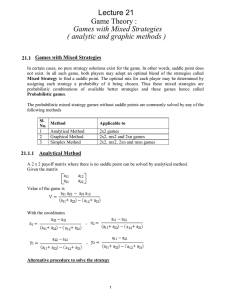Fox - PassFinal.com
advertisement
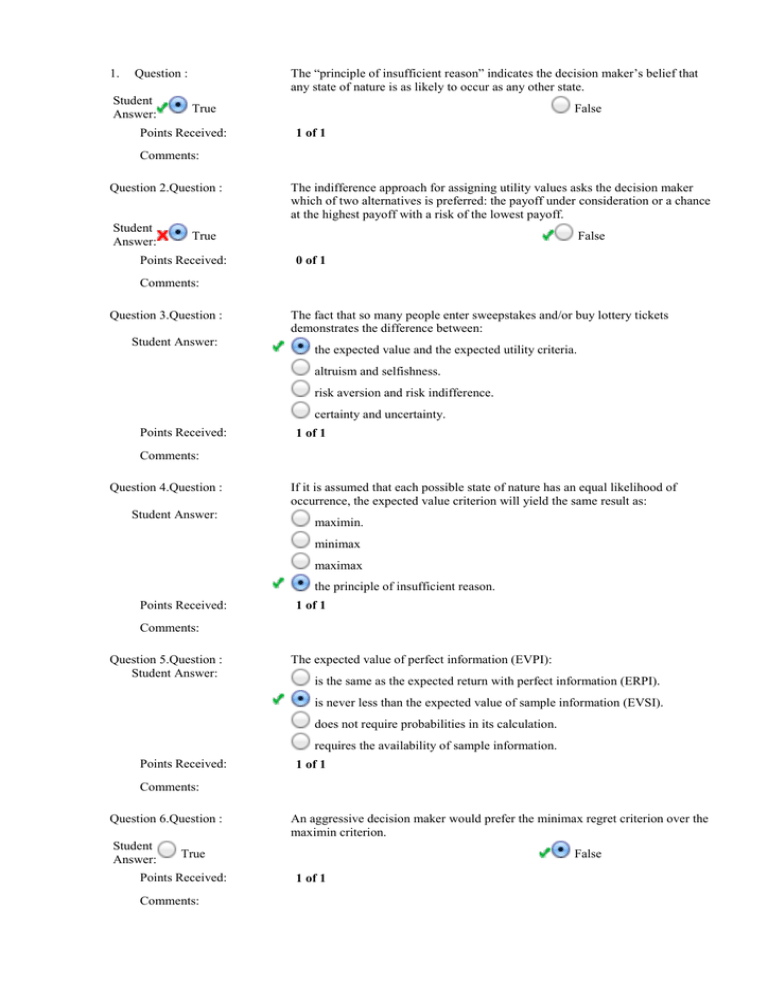
1. Question : Student Answer: The “principle of insufficient reason” indicates the decision maker’s belief that any state of nature is as likely to occur as any other state. True Points Received: False 1 of 1 Comments: Question 2.Question : Student Answer: The indifference approach for assigning utility values asks the decision maker which of two alternatives is preferred: the payoff under consideration or a chance at the highest payoff with a risk of the lowest payoff. True Points Received: False 0 of 1 Comments: Question 3.Question : Student Answer: The fact that so many people enter sweepstakes and/or buy lottery tickets demonstrates the difference between: the expected value and the expected utility criteria. altruism and selfishness. risk aversion and risk indifference. certainty and uncertainty. Points Received: 1 of 1 Comments: Question 4.Question : Student Answer: If it is assumed that each possible state of nature has an equal likelihood of occurrence, the expected value criterion will yield the same result as: maximin. minimax maximax the principle of insufficient reason. Points Received: 1 of 1 Comments: Question 5.Question : Student Answer: The expected value of perfect information (EVPI): is the same as the expected return with perfect information (ERPI). is never less than the expected value of sample information (EVSI). does not require probabilities in its calculation. requires the availability of sample information. Points Received: 1 of 1 Comments: Question 6.Question : Student Answer: An aggressive decision maker would prefer the minimax regret criterion over the maximin criterion. True Points Received: Comments: False 1 of 1 Question 7.Question : Student Answer: The states of nature in a payoff table should be mutually exclusive and collectively exhaustive. True Points Received: False 1 of 1 Comments: Question 8.Question : Student Answer: Utilities are generally well approximated by monetary payoffs for: risk-averse individuals. risk-preferring individuals. small businesses. large corporations. Points Received: 0 of 1 Comments: Question 9.Question : Student Answer: Consider the payoff table in chapter 6 problem 7 (page 376). The optimal decision under the maximin criterion is: D1 D2 D3 D4 Points Received: 1 of 1 Comments: Question 10.Question : Student True Answer: Points Received: Comments: The payoff table always has more states of nature than decision alternatives. False 1 of 1

